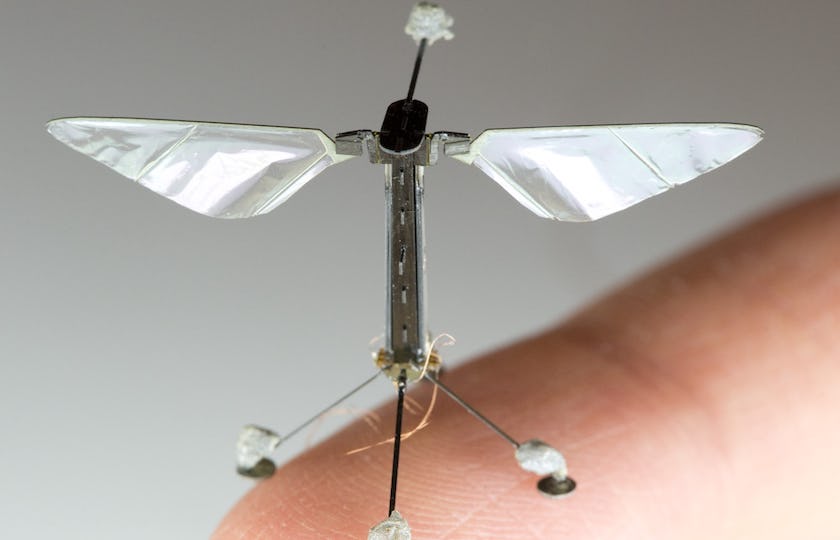Inspired by the biology of a bee, Wyss Institute’s researchers have created RoboBee – a robotic insect playing a potential role in crop pollination or disaster relief.
Other applications for this insect-inspired robot include high-resolution weather and climate mapping, environmental monitoring, search and rescue missions, and surveillance.
The researchers claim that RoboBee is capable of self-contained, self-directed flight as well as accomplishing coordinated behaviour in large groups when equipped with the “artificial muscles”.
Specifically, the artificial insect can reach vertical takeoff, hovering, and steering thanks to the submillimeter-scale anatomy and two wafer-thin wings that flap at 120 times per second. This feature can help in environmental monitoring, search-and-rescue operations, and assistance with crop pollination.
You can see how the Robobee works in the video below, created for the Wyss Institute.
Additionally, some models of RoboBee allow the transition from swimming underwater to flying, as well as “perch” on surfaces using static electricity.
Pop-Up microelectromechanical (MEMs) technologies – a cutting-edge manufacturing technique developed by researchers – have enlarged the boundaries of current robotics design and engineering.
Part of Harvard University, the Wyss Institute is making all potential areas for the use of RoboBees available for licensing by commercial organisations.
Recommended reading: These solar-powered soft robots can help clean up oil spills.



